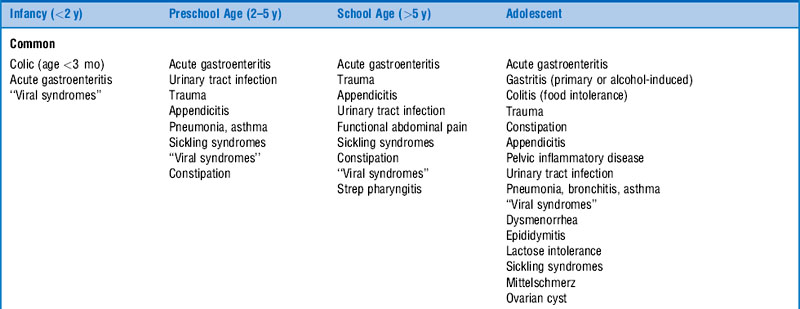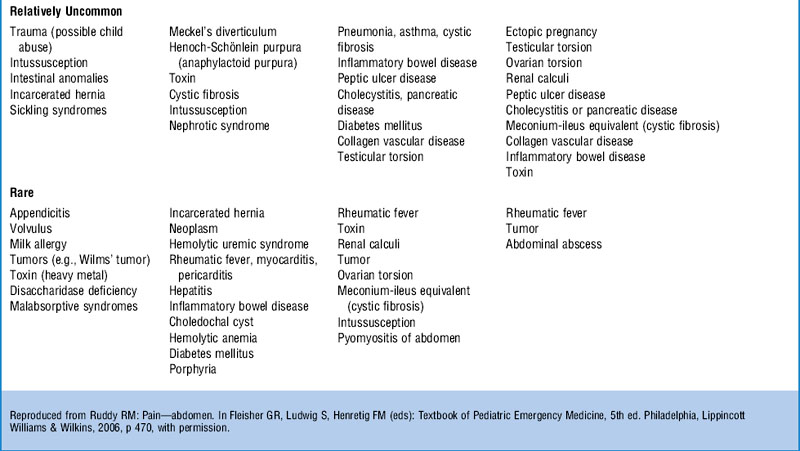Chapter 5 Abdominal Pain
1 Why is the evaluation of abdominal pain especially challenging in the pediatric patient?
Pollack ES: Pediatric abdominal surgical emergencies. Pediatr Ann 25:448–457, 1996.
2 How can I organize my approach to the patient?
In the unstable patient, the initial approach should begin with an assessment of the patient’s airway, breathing, and circulation. Following stabilization, obtain a complete history and perform a physical examination. The history and physical examination are the essential components of the evaluation. Elicit the nature of the pain, such as its onset, quality, location, and duration, as well as the presence of any associated symptoms. The differential diagnosis of abdominal pain in children is extensive (Table 5-1). The age of the patient and the most likely diagnoses in that age group can be used in concert with the history and physical examination to narrow the differential and guide further diagnostic testing.
















